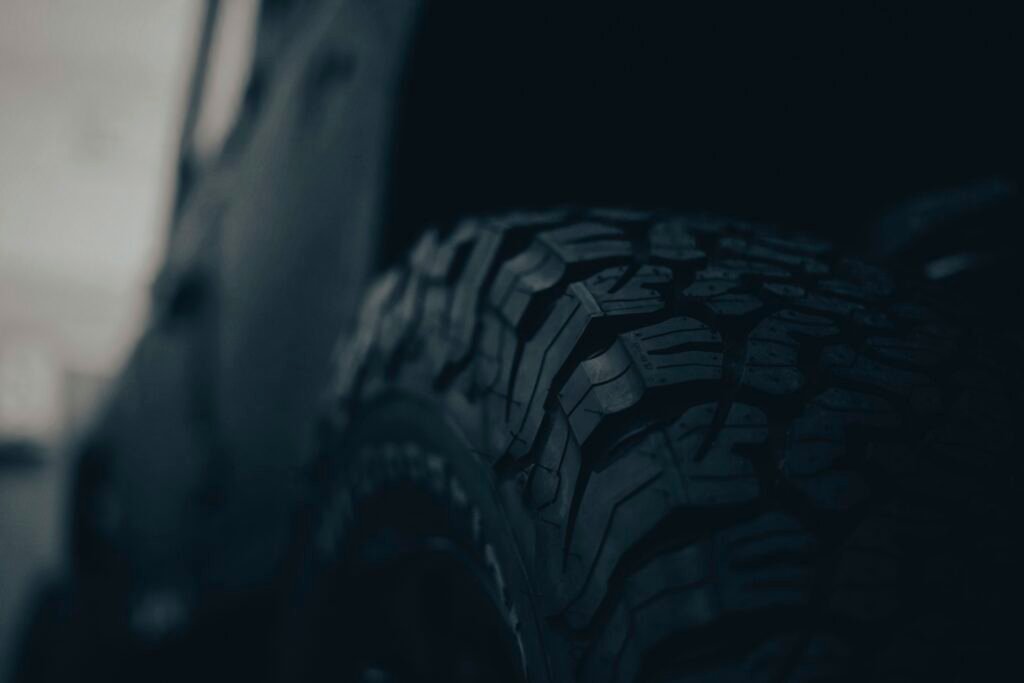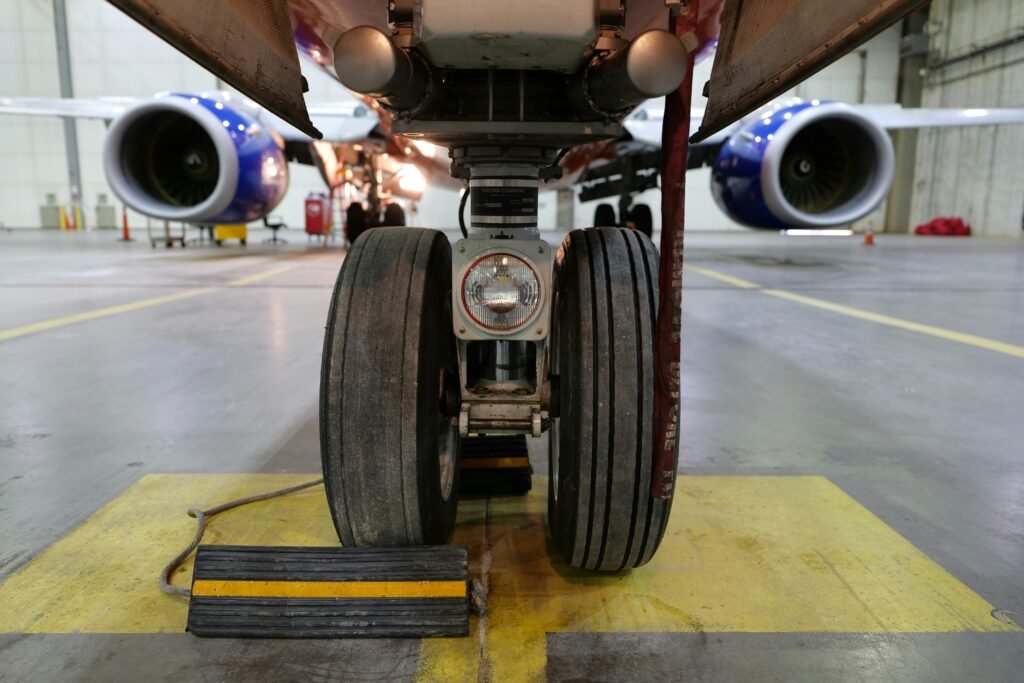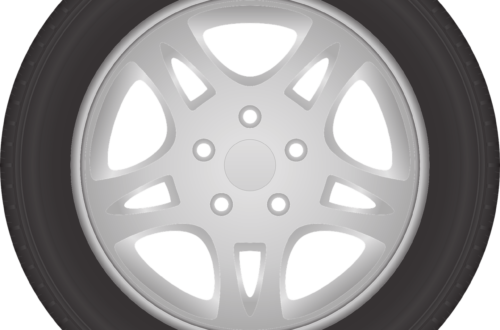Did you know that properly maintaining your tires can greatly extend their lifespan and improve your overall driving experience? In this article, we will explore the importance of preventing tire wear and tear and provide you with some valuable tips on how to keep your tires in top condition. By taking proactive measures to prevent tire damage, you can ensure a smoother and safer ride while also saving money in the long run. So, let’s jump right in and discover the key strategies for keeping your tires in tip-top shape.

This image is property of images.unsplash.com.
Regular Tire Maintenance
Checking Tire Pressure
Regularly checking the tire pressure is essential for maintaining optimal performance and safety. Properly inflated tires provide better fuel efficiency, longer tire life, and improved handling. To check the tire pressure, you can use a tire pressure gauge. Simply unscrew the valve cap, attach the gauge to the valve stem, and take a reading. If the pressure is below the recommended level, you can add air using an air compressor or visit a gas station with an air pump.
Rotating Tires
Regularly rotating your tires is another important aspect of tire maintenance. Tire rotation involves moving tires from one position to another to ensure even wear. By rotating the tires, you can extend their lifespan and enhance overall performance. The front tires tend to wear out more quickly than the rear ones due to factors such as steering and braking. Rotating the tires every 5,000 to 7,000 miles helps distribute the wear and provides a smooth and comfortable driving experience.
Balancing Tires
Tire balancing is the process of evenly distributing the weight of the tire and wheel assembly. Balanced tires ensure a smooth ride by eliminating vibrations and reducing stress on suspension components. When tires are not properly balanced, it can cause uneven wear, which leads to shorter tire life. To check if your tires need balancing, you may notice vibrations or shaking at high speeds. A professional tire technician can use specialized equipment to rebalance the tires and restore optimal performance.
Proper Tire Inflation
Importance of Proper Inflation
Maintaining proper tire inflation is crucial for several reasons. Firstly, underinflated tires can increase rolling resistance, resulting in decreased fuel efficiency. Additionally, improperly inflated tires can negatively affect handling and braking performance, compromising overall safety. Overinflated tires, on the other hand, can lead to a harsh ride and reduced traction. By keeping your tires properly inflated, you can enjoy the benefits of improved fuel efficiency, better handling, and increased safety.
Effects of Underinflated Tires
When tires are underinflated, they become more susceptible to wear and tear. The lack of proper inflation leads to uneven wear on the tread, particularly on the outer edges. This not only decreases tire life but also compromises traction and handling. Underinflated tires are also more prone to blowouts, which can be dangerous, especially at high speeds. Therefore, regularly checking and maintaining the correct tire pressure is vital in preventing these issues.
Effects of Overinflated Tires
Overinflated tires pose their own set of problems. When the tire pressure is too high, the contact patch with the road surface becomes smaller, resulting in reduced traction. This can lead to longer braking distances and decreased control during turns. Overinflated tires also tend to wear more quickly in the center of the tread. The excessive pressure can cause the tire to become stiff, resulting in a harsh and uncomfortable ride. By avoiding overinflating your tires, you can maintain optimal handling, comfort, and tread life.
Wheel Alignment
Importance of Proper Alignment
Proper wheel alignment is essential for safe and efficient driving. When the wheels are aligned correctly, they are parallel to each other and perpendicular to the road. This ensures stability, even tire wear, and predictable handling. Proper alignment also helps maintain the correct steering response and reduces stress on suspension components. By investing in regular wheel alignments, you can improve the overall performance and longevity of your tires.
Effects of Misaligned Wheels
If your wheels are misaligned, you may experience various negative effects. One noticeable effect is uneven tire wear. Misaligned wheels can cause excessive wear on specific parts of the tire, leading to premature replacement. Additionally, improper alignment can result in a vehicle that pulls to one side, leading to reduced control and increased driver fatigue. Misaligned wheels can also cause vibrations, affecting ride comfort. To avoid these issues, it is crucial to have your wheel alignment checked and adjusted as needed.
Different Types of Wheel Alignment
There are different types of wheel alignments to address specific alignment issues. The three primary types include front-end alignment, thrust alignment, and four-wheel alignment. Front-end alignment focuses on the front wheels and is suitable for vehicles with solid rear axles. Thrust alignment involves adjusting the rear wheels’ angles in relation to the vehicle’s centerline and is best for vehicles with independent rear suspensions. Four-wheel alignment, as the name implies, aligns all four wheels and is recommended for vehicles with all-wheel drive or four-wheel drive systems. A professional alignment technician can determine the most suitable alignment type for your vehicle.
Driving Habits
Avoiding Harsh Braking
Driving habits greatly influence tire wear and tear. One habit to avoid is harsh braking. Hard and sudden braking puts excessive strain on the tires, causing them to wear down faster. Instead, strive for smooth and gradual braking, allowing the vehicle to decelerate smoothly without unnecessary stress on the tires. By adopting this driving habit, you can prolong the lifespan of your tires and maintain optimal performance.
Avoiding Hard Cornering
Another driving habit to be mindful of is hard cornering. Taking turns at high speeds and with excessive force can lead to increased wear on the tire shoulders. This uneven wear pattern can decrease tire life and compromise handling performance. To minimize tire wear, it is advisable to approach corners at appropriate speeds, maintain a steady acceleration, and utilize smooth steering inputs. By driving cautiously around corners, you can keep your tires in better condition for longer.
Avoiding High-Speed Driving
High-speed driving can have a detrimental effect on tire wear and tear. Continuous driving at excessive speeds generates more heat, which can accelerate tire deterioration. Additionally, high-speed driving can increase the chances of a blowout or loss of control, posing a significant safety risk. By adhering to speed limits and avoiding excessive speeds, you can reduce tire stress and promote their longevity.

This image is property of images.unsplash.com.
Avoiding Road Hazards
Avoiding Potholes
Potholes can cause significant damage to your tires if you’re not careful. Driving over potholes at high speeds can lead to sidewall bulges, tread punctures, or even bent wheel rims. To avoid these hazards, it is important to stay vigilant while driving and watch for potholes. If it’s not possible to avoid a pothole, reduce your speed and drive over it slowly to minimize the impact on your tires. Regularly inspect your tires for any signs of damage after encountering potholes and address any issues promptly.
Avoiding Curbs and Obstacles
Curb damage is a common occurrence when parking, making tight turns, or misjudging distances. Hitting a curb or other obstacles can lead to sidewall damage, cuts, or misalignment. To avoid such damage, exercise caution when parking and turning, and ensure you have enough clearance. Take your time and be mindful of your surroundings to prevent unnecessary impacts and potential tire damage. Your tires will thank you for the extra care.
Avoiding Rough Roads
Rough roads with irregular surfaces can also contribute to tire wear and tear. The constant bouncing and jolting over potholes, gravel, or uneven pavement can cause tread damage over time. Whenever possible, try to choose smoother routes or alternate roads to avoid excessively rough terrain. By minimizing exposure to rough roads, you can maintain the integrity of your tires and prolong their lifespan.
Tire Selection
Choosing the Right Tires
Selecting the appropriate tires for your vehicle and driving needs is crucial for optimal performance and safety. Consider factors such as the climate you’ll be driving in, the type of vehicle you have, and the intended use of the tires. For example, if you live in a snowy area, you may want to invest in winter tires with enhanced traction. It’s also vital to choose tires that fit your vehicle’s specifications, including size and load capacity. When in doubt, consult with a tire professional to ensure you make the right tire selection.
Matching Tires to Driving Conditions
Different driving conditions call for different types of tires. For wet and rainy conditions, tires with good wet grip and hydroplaning resistance are recommended. In snowy and icy conditions, winter tires with deep grooves and specialized tread patterns excel. If you frequently drive on dry roads or in hot weather, performance tires with enhanced grip and handling capabilities may be more suitable. Matching your tires to the specific driving conditions you encounter can greatly improve safety and performance.
Tire Tread Patterns
Tire tread patterns play a crucial role in determining a tire’s traction and performance characteristics. Different tread patterns are designed for different driving conditions. For example, all-season tires typically have symmetrical or asymmetrical tread patterns that provide a balance of performance in various weather conditions. On the other hand, winter tires have more aggressive tread designs with deep grooves and sipes for enhanced snow traction. Understanding the different tread patterns and their intended purposes can aid you in selecting the most appropriate tires for your driving needs.

This image is property of images.unsplash.com.
Proper Load Capacity
Understanding Load Ratings
Load ratings indicate the maximum weight a tire can safely carry at the recommended inflation pressure. It is essential to understand and adhere to the load ratings specific to your vehicle and tires. Overloading the tires can lead to excessive heat buildup, tire failure, and compromised safety. Refer to your vehicle’s manual or consult a tire professional to determine the correct load capacity for your vehicle and ensure you are within the recommended limits.
Effects of Overloading
Overloading a vehicle beyond its recommended load capacity can have severe consequences. Excessive weight places strain on the tires, causing them to wear more quickly and potentially leading to a blowout. Overloaded tires also have reduced grip and handling capabilities, increasing the risk of accidents. By ensuring your vehicle is not overloaded and that you stay within the recommended load limits, you can maintain safe and reliable tire performance.
Effects of Underloading
Underloading, while less common, can also have negative effects on tire performance. When a tire is underloaded, it may not make proper contact with the road surface, resulting in reduced traction and compromised handling. Additionally, underloaded tires may wear more quickly and unevenly. It is important to follow the manufacturer’s recommendations regarding load capacity and avoid underloading your tires to maintain optimal performance.
Regular Inspections
Monitoring Tread Depth
Regularly monitoring your tire’s tread depth is essential for safe driving. Adequate tread depth is crucial for providing traction in various road conditions, especially on wet or snowy surfaces. Use a tread depth gauge to measure the tread depth and ensure it meets the legal requirements. If the tread depth is below the recommended limit, it is time to consider replacing the tires to ensure optimal safety and performance.
Checking for Signs of Damage
Inspecting your tires for signs of damage is a crucial part of regular maintenance. Look for cuts, bulges, cracks, or any other visible damage on the tire sidewalls and tread. These signs of damage can indicate potential tire failure, so addressing them promptly is important. Additionally, check for any foreign objects lodged in the tread, such as nails or screws, as they can cause slow leaks or punctures. By regularly inspecting your tires, you can identify and address any issues before they escalate.
Inspection by a Professional
While it is important to perform regular visual inspections yourself, having a professional inspection is highly recommended. Tire professionals are trained to identify any potential issues or hidden damage that may not be apparent to the untrained eye. Professional inspections can include checking for proper tire inflation, tread wear patterns, and more detailed assessments of your tires’ overall condition. By incorporating regular professional inspections into your maintenance routine, you can ensure the utmost safety and performance of your tires.

This image is property of images.pexels.com.
Proper Storage
Storing Tires Correctly
Properly storing your tires when they are not in use is crucial for maintaining their condition. Clean the tires thoroughly before storage to remove any dirt or debris that could potentially damage the rubber. Tires should be stored in a clean, cool, and dry environment away from direct sunlight, as excessive heat and UV rays can cause the rubber to degrade. If possible, store the tires off the ground to prevent flat spots from forming.
Preparing Tires for Storage
Before storing your tires, ensure they are inflated to the recommended pressure. Overinflating or underinflating the tires during storage can lead to unnecessary stress on the rubber. It is also recommended to place each tire in a tire storage bag or wrap them in plastic to protect them from exposure to moisture or contaminants. By properly preparing your tires for storage, you can preserve their condition and maximize their lifespan.
Rotation during Storage
To prevent one section of the tire from bearing the weight for an extended period, it is advisable to rotate the tires during storage. Every few months, or at least once a year, swap the positions of the tires within the storage area. This helps distribute the weight and minimizes the chances of flat spots developing. By including tire rotation within your storage routine, you can ensure that your tires remain in excellent condition for a longer period.
Benefits of Preventing Tire Wear and Tear
Improved Safety
By following regular tire maintenance practices and preventing wear and tear, you can significantly improve safety on the road. Properly inflated and aligned tires provide better traction, reducing the risk of accidents, especially in adverse weather conditions. Additionally, monitoring tire tread depth and promptly replacing worn-out tires enhances grip, preventing skidding and potential loss of control. Prioritizing tire maintenance contributes to safer driving for you and everyone sharing the road.
Better Handling and Performance
When tires are well-maintained, they perform optimally, leading to better handling and driving performance. Properly inflated tires ensure consistent contact with the road surface, allowing for precise steering response and improved cornering capabilities. Regular rotations and alignments help maintain even tire wear, resulting in a smoother and more comfortable ride. By taking care of your tires, you can enjoy enhanced handling and performance, making every drive a more enjoyable experience.
Extended Tire Life
Preventing tire wear and tear through regular maintenance practices can significantly extend the lifespan of your tires. By keeping tires properly inflated, rotating them regularly, and addressing any alignment issues promptly, you can optimize their longevity. This not only saves you money in the long run but also contributes to environmental sustainability by minimizing tire waste. By investing time and effort in tire maintenance, you can enjoy the benefits of safe and reliable tires for an extended period.





